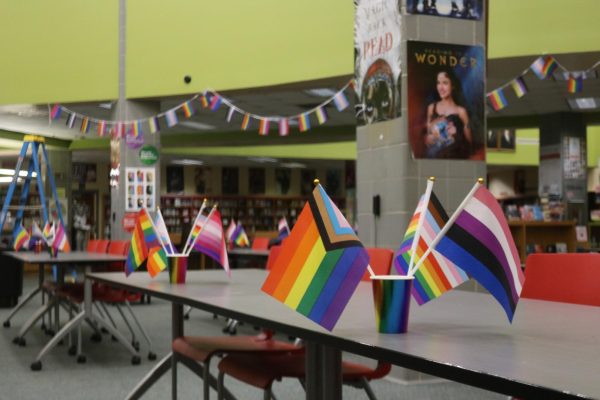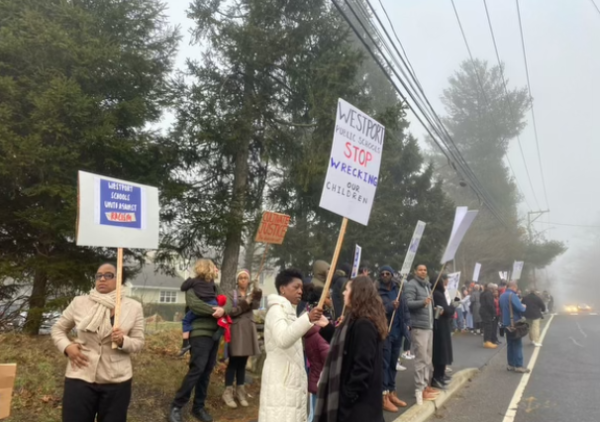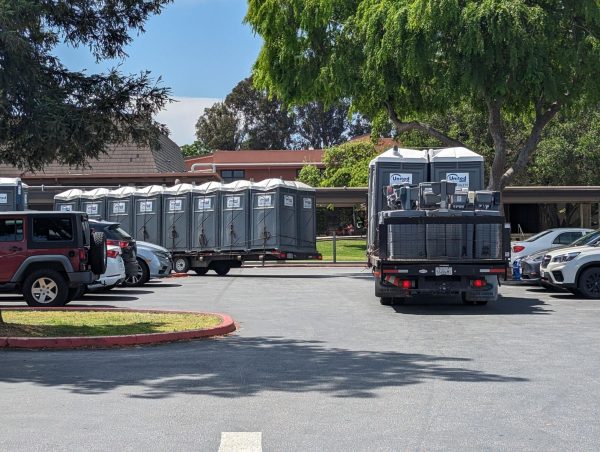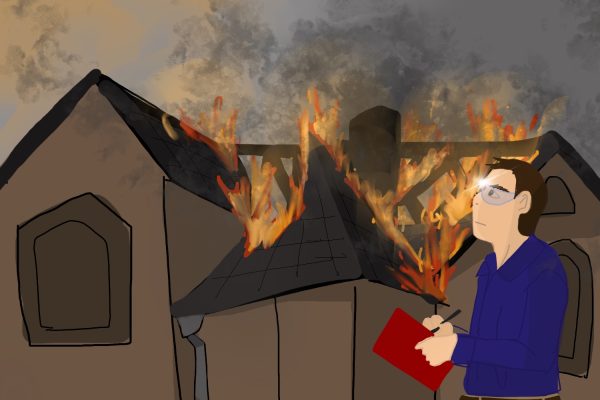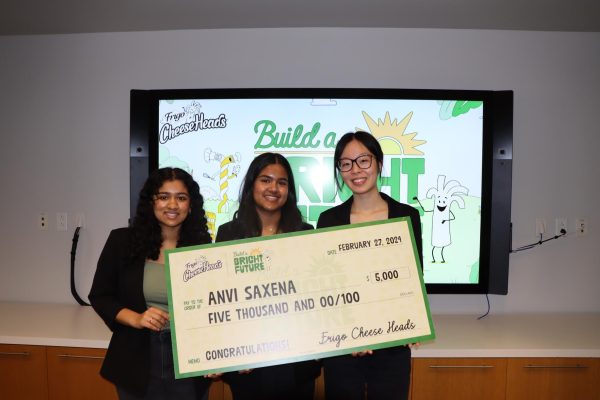As schools fully reopen, district begins efforts to help staff receive vaccinations
After discussing plans with the six Johnson County public schools, the district has facilitated the process of beginning staff vaccinations
Tatum Elliott
After discussing plans with the six Johnson County public schools, the district has facilitated the process of beginning staff vaccinations
February 11, 2021
Planning and Distribution
To get to this point, the district had to collaborate with other schools and determine which teachers would receive the vaccine first
As Johnson County moves into Phase 2 of the county’s vaccination plan, the district is in the process of distributing vaccines to all staff and employees. In conjunction with the six Johnson County Public School superintendents and the Johnson County Department of Health, the district has devised a plan for allocating the county’s available vaccines for staff in the district.
While a hand-full of staff members in the district, such as school nurses or those who participated in vaccine trials, have received their vaccine, the majority of the district’s staff have yet to receive their dose. On Wednesday, Feb. 4, the plans for staff vaccine rollout began as 238 staff members across the district were set to receive their vaccines. While the district has coordinated the rollout of the vaccines, the Johnson County Department of Health and affiliated clinics—such as Children’s Mercy Hospital—are in charge of providing the staff members their vaccinations.
According to assistant superintendent Alvie Cater, all staff members in the district are eligible to receive a vaccine dose.
“We have 1,200 that includes all of our teachers, paraprofessionals, custodians, and all of the support positions in our facilities department. We’re also including, if we can, our bus drivers [and] substitute teachers who substitute on a regular basis in our district,” Cater said. “Also, we have some student teachers who are student teaching right now in our district and they would be included in that total list because they work with students on a daily basis.”
The answer to when students will be receiving a vaccine is unknown at this given time and is something that will be discussed in the future, according to superintendent Frank Harwood. For now, vaccines rollout efforts will be focused on staff.
“There aren’t any vaccines that have been approved for anyone under 16, so there actually isn’t a vaccine available for the majority of our students and students under 18 are not in Phase 2 and would actually probably be in Phase 5,” Harwood said. “So at this point, there aren’t any vaccines available for students.”
At this point, there aren’t any vaccines available for students.
— superintendent Frank Harwood
With approximately 1,200 staff members in the district, the district had to coordinate with other Johnson County public schools to decide which staff members would receive the available vaccines first. As a result, according to Harwood, the decision was to distribute the available vaccines in the county to schools “based proportionally on the size of the district.”
Within the district, according to Harwood, two groups of staff were formed, classified as Tier 0 and Tier 1, to determine priority for vaccines that were administered Wednesday, Feb. 4. Given the limited availability of vaccines, the decision to distribute vaccines to staff was based on factors such as age, health concerns, and work with students who are unable to wear masks.
“The first round were individuals, mostly special education teachers, that work with students that can’t wear masks. So that was our first focus where staff members would be at the highest risk of exposure due to the students that they work with,” Harwood said. “Then, the next group is the second group of staff members which, who we consider the most vulnerable for having a more severe case of COVID-19, would be staff members over 65 years of age, or that have known health conditions that qualify as a concern. How we move through the other groups will depend on how many vaccines we get.”
While not all 1,200 district staff members have been able to receive a dose yet, Harwood notes that availability of vaccines for just schools in the Johnson County area is split between over 150,000 individuals considered in the Phase 2 plan of the county’s vaccine rollout.
They just don’t have the doses to [vaccinate all teachers] and they’re looking for a way to be fair to other groups.
— superintendent Frank Harwood
“Phase 2 for Johnson County is for people 65 [and older], first responders, K-12 teachers and staff, child care workers, and other essential workers. We were fortunate that Johnson County included K-12 education staff within their First Tier,” Harwood said. “The county is getting between 6,00 and 8,000 doses a week. They are dedicated almost 2,500 doses to K-12 staff, which is a pretty good chunk of that when you think about how there are about 90,000 [people who are] 65 and older in Johnson County.”
While Harwood would have liked to be able to distribute vaccines to all 1,200 staff members across the district at once, he acknowledges that it is impossible, given the limited number of vaccines available that the county has.
“They just don’t have the doses to do that and they’re looking for a way to be fair to other groups that they have to serve and equitable across all of the public districts and the private schools,” Harwood said. “It has been a collaboration from the beginning of ‘this is what we’d really like, this is what’s doable’ and then how do we make it work from there.’”
Teacher Reactions
As vaccines are being distributed, teachers voice their opinion about the process
With the uncertainty over when they will receive the vaccine, many teachers, both those who have received the vaccine and those who have not, are worried about the plan’s rollout and coming back to school without all the teachers vaccinated.
For De Soto Teachers Association (DTA) president Emily Valdez, getting teachers vaccinated is a necessity.
“If teachers are going to put themselves in a classroom with 20 to 30 students, risking their health, the Board of Education MUST make it a priority to vaccinate teachers who wish to be vaccinated,” Valdez said. “The majority of secondary DTA members do not feel comfortable going back to full in-person learning without being vaccinated.”
Spanish teacher Edith Paredes shares Valdez’s about returning to school before the vaccine has been distributed to everyone.
“I’m not particularly happy about being back,” Paredes said. “I’m worried about my family and what I could bring home. I also feel like we’re not ready to move in that direction. I’m hopeful, I’m here and I will do my job the best way I can. And we’ll go from here, just take it one day at a time. And hopefully it was the right decision. I’m hoping we don’t have to shut down again, because I know there are a lot of cases in our buildings. A lot of them. I don’t think it’s safe for all of us to be here together.”
The most up-to-date data regarding COVID-19 cases at Mill Valley can be found here, on the district’s dashboard.
Referring to studies by the CDC, Valdez is concerned with the Board of Education’s (BOE) current safety procedures in the classroom.
“The CDC shares how to set up a classroom during the pandemic — some precautions should be happening but are not — including keeping desks 6-feet apart (like the BOE members during their meetings). The association wants the Board of Education to lean on science and data,” Valdez said.
Science teacher Landra Fair is also worried about the lack of social distancing that is able to happen in the classroom.
“I think it’s ridiculous,” Fair said. “Look at my room. Kids are sitting shoulder to shoulder. If somebody in my classroom is positive for COVID, is this mask going to keep the people sitting inches away from them safe? I mean, just not enough work has been done. There’s not a single study that’s looked specifically at that. I think the board and the administration is really taking a risk by allowing this.”
Although Harwood is aware of the concern of many staff members, he still feels that the evidence supports going back full in-person.
I think the board and the administration is really taking a risk by allowing this.
— science teacher Landra Fair on in-person learning while teachers are unvaccinated
“For the staff members we realized that from the beginning there is a wide spectrum of anxiety and concern about everything we’re doing,” Harwood said. “What we’re trying to do is help everybody see that we are taking it seriously. We are using a reasoned and reasonable method to do this and if things aren’t working well, we’ll go back the other direction. But the research and the studies that are out there shows that this was a reasonably safe way to move forward.”
While Paredes disagrees with the decision to be back, she does acknowledge the efforts the district has taken to keep teachers safe.
“We need to be vaccinated, period, but I think [the district] is doing everything they can for our safety,” Paredes said. “There are N-95 masks somewhere in the building we can get. I know if we wanted we were given face shields, so I feel like they’re doing what they can to keep us safe.”
Fair, who has already received the vaccine, was part of the initial Moderna vaccine trail.
“I saw on the news that Moderna was looking for participants to get vaccinated this summer, and there was a link and I signed up,” Fair said “The clinic was like well organized and the communication with them is all really good. They seem to know what they’re doing, and when I went in, it seemed like a typical doctor’s office where they took my blood pressure and weight and asked me health questions. It seemed just very normal to go in and kind of have a doctor before they gave me the vaccination.”
In addition to Fair, science teacher Donna Riss was another participant in the Moderna vaccine trail. Although they received the placebo in the initial trail, they have both since been vaccinated.
While Fair has been happy with the way the trail was run, she feels like the process for getting others vaccinated could be greatly improved.
“There doesn’t seem to be any good thing about this vaccine rollout,” Fair said. “I’d like to see stadiums and the National Guard step up. For my parents who don’t email, they don’t do text. They don’t do any of that. For them to read in the newspaper, see on the news, ‘hey vaccines are going to be at the fairgrounds from eight to noon Monday through Friday, show up and get vaccinated’. That’s what they need.”
For Riss, joining the trail was about one thing: protection for herself, her family, and her students.
“I have people at home. My husband will be 70 in a few months. My mom’s in her 80s so I worry about people in my life outside of school in addition to all my colleagues at school too and the kids,” Riss said. “I worry about the kids getting sick, so we’re plodding along but there’s no social distancing going on. In my classroom they’re sitting shoulder to shoulder at lab tables and especially at lunch there’s concern.”
Although Fair had her reservations about the new vaccine, she still decided to go forward.
“This [vaccine] is not a man-made piece of the virus. They didn’t grow it in chicken eggs, so it’s something that’s never been done before,” Fair said. “I feel that good people work on this, and they know way more than I know about the science. And, you know, I guess I trust them.”
With the uncertainty of the new vaccine, there has been lots of talk about side effects. While Riss still feels that there could be side effects on her second dose, anything she has felt has been minor.
I feel that good people work on this, and they know way more than I know about the science. And, you know, I guess I trust them.
— science teacher Donna Riss on the vaccine
“All I had was a sore arm for the first one,” Riss said. “When I was in the trial I remember when I got my second dose they said we have had reports that people have had a bit more severe symptoms with their second dose. I think if you do your due diligence and you understand what could happen in terms of those symptoms and make sure that you pay attention to the literature that they give you when you get a vaccine and that you pay attention to what your doctor tells you about the vaccine.”
For those on the fence, Riss feels that it is important to listen to what experts are saying and to believe those who know what they are doing.
“I think that’s unfortunate that in our world people don’t trust,” Riss said. “I can understand there have been circumstances where there are people that are skeptical about vaccines, but I think it’s important that people believe the scientists.”
Paredes shares this way of thinking.
“I think we need to trust science,” Paredes said “We need to trust doctors, we need to get it in order to protect everyone from the virus. It’s like every year we get a flu shot, and we don’t know if it’s going to cover the strain that we have, but it’s better than having nothing, no protection.”
Valdez feels it is important to keep others in mind when making a decision about getting the vaccine.
“Read the science, think about others – remember that when choosing to be vaccinated, you are protecting not only yourself but protecting those around you and their families from the chance of death or severe illness,” Valdez said.
If you want to play your odds, I think the safer bet is to get the vaccine than to not get it and get COVID. COVID is a much, much, much, much bigger risk.
— science teacher Landra Fair
For Fair the decision for getting the vaccine is simple: are you more afraid of getting COVID-19 or having a side effect from the vaccine?
“The [vaccine] that I did, was tested with over 40,000 people and millions have been vaccinated since and there has been no serious side effects. And yet, how many people died from COVID?” Fair said. “If you want to play your odds, I think the safer bet is to get the vaccine than to not get it and get COVID. COVID is a much, much, much, much bigger risk.”
As vaccines are being distributed to the staff across the district, Harwood is optimistic that the vaccines will help ensure the comfort and safety of staff members while also helping students continue receiving education.
“What we’re looking at with a vaccine is that it will reduce the quarantines of teachers because once you’re fully vaccinated, you’re not susceptible to quarantine,” Harwood said. “So, even if students are being isolated or quarantined, the staff wouldn’t need to be so that’s going to add a great deal of comfort for staff members but also a lot more continuity for students as well.”
This story was originally published on The JagWire/Jag Yearbook/MVTV on February 9, 2021.
































![IN THE SPOTLIGHT: Junior Zalie Mann performs “I Love to Cry at Weddings,” an ensemble piece from the fall musical Sweet Charity, to prospective students during the Fine Arts Showcase on Wednesday, Nov. 8. The showcase is a compilation of performances and demonstrations from each fine arts strand offered at McCallum. This show is put on so that prospective students can see if they are interested in joining an academy or major.
Sweet Charity originally ran the weekends of Sept. 28 and Oct. 8, but made a comeback for the Fine Arts Showcase.
“[Being at the front in the spotlight] is my favorite part of the whole dance, so I was super happy to be on stage performing and smiling at the audience,” Mann said.
Mann performed in both the musical theatre performance and dance excerpt “Ethereal,” a contemporary piece choreographed by the new dance director Terrance Carson, in the showcase. With also being a dance ambassador, Mann got to talk about what MAC dance is, her experience and answer any questions the aspiring arts majors and their parents may have.
Caption by Maya Tackett.](https://bestofsno.com/wp-content/uploads/2024/02/53321803427_47cd17fe70_o-1-1200x800.jpg)
![SPREADING THE JOY: Sophomore Chim Becker poses with sophomores Cozbi Sims and Lou Davidson while manning a table at the Hispanic Heritage treat day during lunch of Sept 28. Becker is a part of the students of color alliance, who put together the activity to raise money for their club.
“It [the stand] was really fun because McCallum has a lot of latino kids,” Becker said. “And I think it was nice that I could share the stuff that I usually just have at home with people who have never tried it before.”
Becker recognizes the importance of celebrating Hispanic heritage at Mac.
“I think its important to celebrate,” Becker said. “Because our culture is awesome and super cool, and everybody should be able to learn about other cultures of the world.”
Caption by JoJo Barnard.](https://bestofsno.com/wp-content/uploads/2024/01/53221601352_4127a81c41_o-1200x675.jpg)





